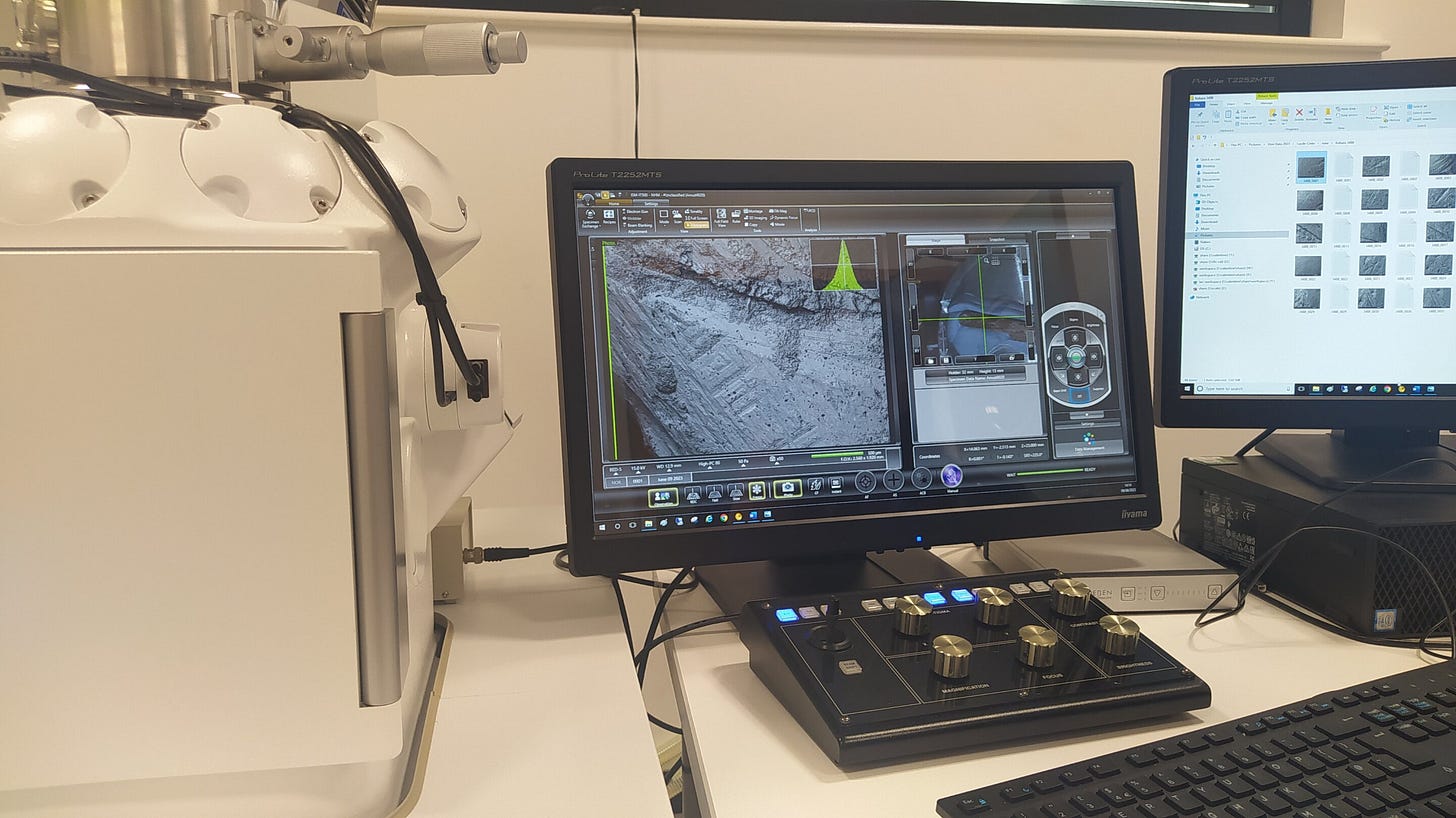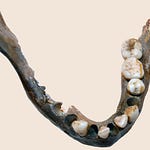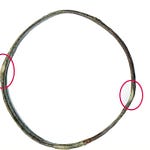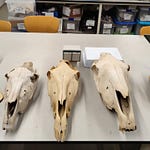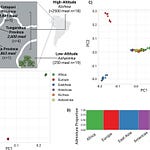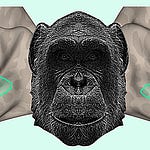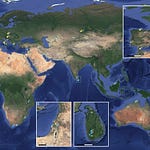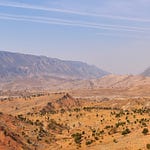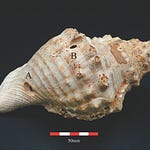When archaeologists study Neanderthal behavior, the focus often gravitates toward hunting prowess, toolmaking strategies, or burial practices. But what happens after the hunt—specifically how meat was processed—can reveal equally profound insights into Neanderthal social life and regional identity.
A recent study by Anaëlle Jallon and colleagues, published in Frontiers in Environmental Archaeology1, compares how two Neanderthal groups, living in caves just 70 kilometers apart in what is today northern Israel, butchered the same kinds of animals in surprisingly different ways. Their findings suggest that Neanderthals, like modern humans, may have had localized food traditions, possibly passed down across generations.
Shared Prey, Diverging Practices
Amud Cave and Kebara Cave, both occupied by Neanderthals between roughly 70,000 and 50,000 years ago, are textbook examples of Middle Paleolithic sites. Each cave yielded a wealth of stone tools, hearths, and faunal remains—mostly of fallow deer (Dama mesopotamica) and mountain gazelles (Gazella gazella), staple prey in the Mediterranean Levant.
Given their geographic proximity and similar toolkits, one might expect the Neanderthals at both sites to have butchered animals in roughly the same manner. But when researchers compared 344 cut-marked bones from both sites using macroscopic and 3D microscopic techniques, the results told a more nuanced story.
“Despite comparable taxonomic distributions, there are notable differences in the density and layout of cut-marks between the two caves,” the authors wrote. “Such discrepancies could possibly reflect inter-group cultural differences related to carcass processing preferences, organization of tasks within the group, or socially transmitted traditions.”
The Cut of Culture
At first glance, the marks on the bones appear as scratches and notches. But under high-resolution Focus Variation microscopes, patterns emerge. Cut-marks from Amud Cave tended to be denser, more overlapping, and often curved. Those from Kebara Cave were generally straighter, more evenly spaced, and often fewer in number.
These weren’t random or incidental differences. The researchers found that:
Amud specimens had more intersecting cut-marks, suggesting a different style or rhythm of butchery.
Bones at Amud were often more fragmented and showed signs of burning—sometimes up to 40% of the assemblage.
Kebara bones, while less burnt and fragmented, displayed a higher incidence of cut-marked remains (15% versus 2.2% at Amud).
Such differences could stem from the use of different tools, meat preparation methods, or group labor dynamics. But the team controlled for many variables, including prey size and skeletal part, and still found that the differences persisted.
“Even when we compare only the gazelles, and only the long bones of gazelles, we find a higher density of cut marks in [bones from] Amud,” Jallon noted. “More cut marks that are crossing each other, less cut marks that are straight lines, but more curved.”
Recipes for Survival?
So what could explain these distinct butchery patterns?
One possibility is that the Neanderthals at Amud were processing meat that had already begun to decompose—either intentionally through meat hanging or unintentionally due to delayed transport. Decomposed tissue behaves differently under a stone flake, requiring more force and more erratic cuts.
Another explanation could be social. Perhaps the task of butchering was divided among more individuals at Amud, each bringing their own rhythm and style to the work. Or perhaps different learning traditions guided how young Neanderthals were taught to process food.
“These aren’t just cut marks being studied,” said archaeologist Matt Pope, who was not involved in the study. “These are the gestures and movements of the Neanderthal people themselves, as evocative to us as footprints or hand marks on a cave wall.”
Beyond the Bone
The findings add to a growing body of research suggesting Neanderthal behavior was more variable—and culturally embedded—than often assumed. From tool production to fire use and now butchery, localized traditions seem to have shaped how Neanderthals lived, even when their environmental contexts were nearly identical.
For archaeologists and anthropologists, this raises new questions: Were there "Neanderthal cuisines"? Did different groups pass down preferred butchering techniques like recipes? And if so, how might this influence how we understand regional identity in prehistoric hominin populations?
The answers lie not just in what Neanderthals hunted, but how they sliced and served it.
Related Research
Soulier, M., & Morin, E. (2016). Cut marks on the bones of large game: New insights into Upper Paleolithic butchery practices. Quaternary International, 403, 33–51. https://doi.org/10.1016/j.quaint.2015.09.051
Bello, S. M., et al. (2009). High-resolution 3D microtopography of cut and percussion marks on bone surfaces. Journal of Archaeological Science, 36(5), 1149–1157. https://doi.org/10.1016/j.jas.2008.11.021
Rendu, W. (2022). Neanderthal subsistence and hunting behaviors in the European Middle Paleolithic. Journal of Archaeological Method and Theory, 29(3), 542–567. https://doi.org/10.1007/s10816-021-09506-0
Binford, L. R. (1981). Bones: Ancient Men and Modern Myths. New York: Academic Press. A foundational work on interpreting archaeological bone assemblages.
Speth, J. D. (2019). Kebara Cave Faunal Remains. Harvard University Press. Offers comprehensive insights into the Kebara assemblage also analyzed in Jallon et al.'s study.
Jallon, A., Crété, L., Bello, S. M., Hovers, E., & Rabinovich, R. (2025). Cut from the same cloth? Comparing Neanderthal processing of faunal resources at Amud and Kebara caves (Israel) through cut-marks analyses. Frontiers in Environmental Archaeology, 4, 1575572. https://doi.org/10.3389/fearc.2025.1575572



